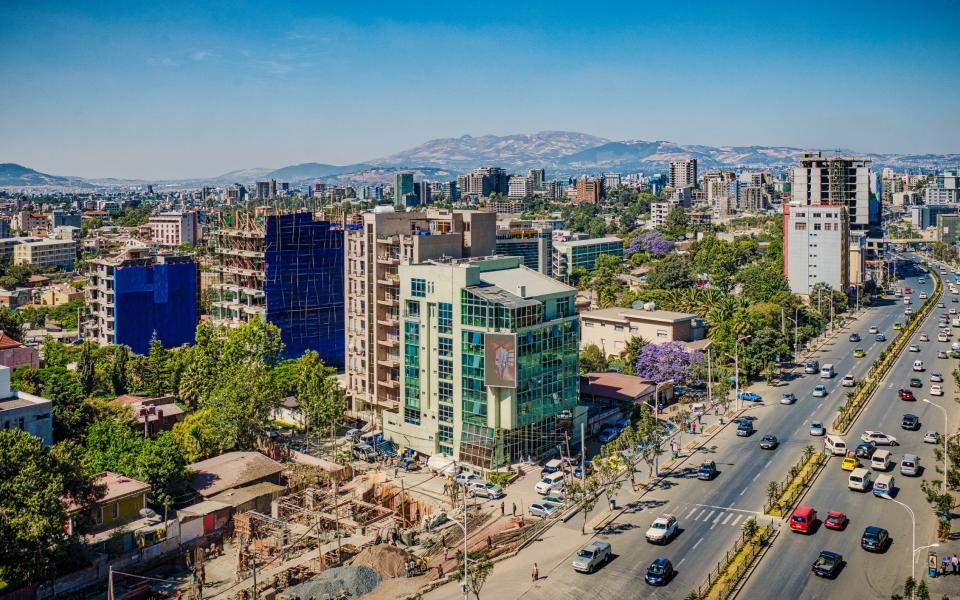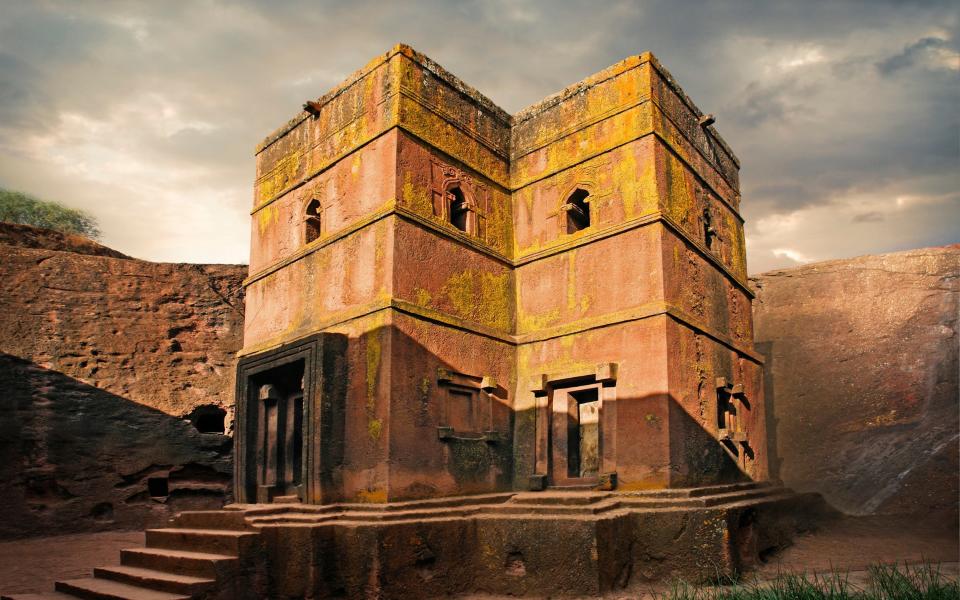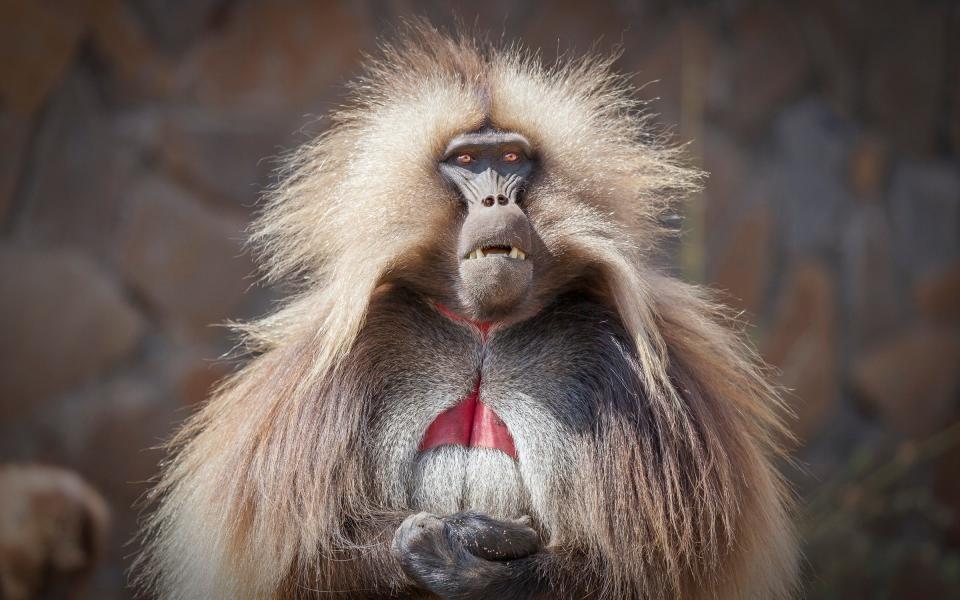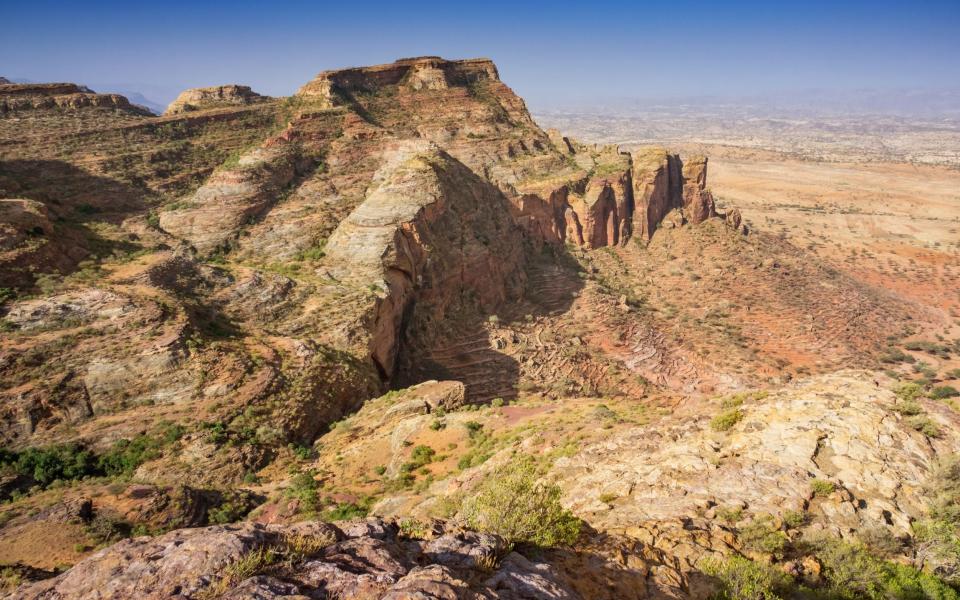Why you should join the British holidaymakers heading to Ethiopia

Ethiopia is so vast you could safely visit many of its cities even when the two-year-long civil war was raging in the north of the country.
Since a ceasefire was signed in November, however, the overwhelming majority of its tourism hotspots are now back on the Foreign, Commonwealth and Development Office’s (FCDO) green list, including the main wildlife-spotting areas, the lava lakes and sulphur fields of the Danakil Depression, and almost all its ancient castles, monasteries and rock-hewn churches.
Unfortunately, Ethiopia’s first capital, Axum, famous for its 1,700-year-old obelisks – and reputed home of the Ark of the Covenant – is still off-limits to visitors; the FCDO currently advises against all travel to Tigray, the northernmost region that tried to break away, where Axum is located. However, with a return to hostilities looking increasingly unlikely, according to Aardvark Safaris’ resident Ethiopian expert Francis Naumann, there’s hope that Tigray’s Unesco World Heritage-listed monoliths and necropolises might one day be back on itineraries soon.
For now, at least – even with Tigray currently off the agenda – interest in Ethiopia is fast returning to pre-war and pre-pandemic levels.

Jonny Bealby, CEO of Wild Frontiers, said it had received “no bookings for Ethiopia for almost three years”, but that enquiries and sales are now “on a level with 2019”.
Ethiopia specialists Tadele Travel have seen a similar resurgence in interest since the November ceasefire. Its director, Girma Tadele, said they received five bookings in just 24 hours after relaunching their tours a fortnight ago.
It’s a trend already being reflected on the ground. The Ethiopian Tour Operators’ Association said its members had seen a notable increase in foreign visitors “during Ethiopian Christmas and Epiphany celebration” – two flamboyant January festivals popular with pre-pandemic tourists.
Even more positively, it revealed how the government is investing time and money into reviving the tourist sector, which accounted for nine per cent of GDP in 2019. The Ministry of Tourism is currently in the process of conducting star ratings and classifications of hotels, restaurants and guest houses across the country to “enhance the quality of service” and double the number of tourism facilities meeting international standards.
What not to miss
The Ethiopians were building churches and monasteries while Rome was still praying to Jupiter and Neptune. Most of its ancient sites are concentrated in the northern highlands, where its emperors – who claimed descent from the Queen of Sheba and King Solomon – originally ruled. Top of the must-visit list is Lalibela’s warren of subterranean churches, which were dug out of the solid bedrock by the 12th-century king of the same name.

Nearby Gondar is also full of gorgeous Ethiopian Orthodox churches, like the fresco-covered Debre Berhan Selassie chapel. However, its main draw is the 17th- and 18th-century castles, with their brooding Moorish ramparts and long line of intriguing connections, from the Mahdist War of the late 19th century to the struggle against Mussolini.
The hidden monasteries of Bahir Dar and Lake Tana are probably the most beautiful and ancient sites in the highlands. You can’t help but be awestruck by their gory murals of sinners being sawn in half – not to mention the mummified corpses of five long-dead emperors on display at one of the 20 monasteries.
Away from the Christian highlands, there’s also the walled, medieval warren of Harar. Known as Islam’s fourth holiest city, this 1,000-year-old World Heritage Site is most famous today for its wild hyenas, which the locals hand-feed each night.
Other must-sees include the otherworldly lava lakes, bubbling sulphur springs and lunar-like salt pans of the Danakil Depression. Formed by the rift of three tectonic plates, this basin is one of the lowest-lying places on earth and a hotbed of geological activity.
And, of course, there’s Ethiopia’s wildlife, too. The huge gelada baboons are the animals almost everyone goes to see, not least because these habituated monkeys live in the Simien Mountains near Gondar (popular for hiking and their sweeping vistas across the Great Rift Valley).

Less frequently sought out is the endangered Ethiopian wolf, which lives in the remote Bale Mountains. The park, which lies south of the capital Addis Ababa, is also home to Ethiopia’s black-maned lions – assumed extinct until 2016, when 50 of them were rediscovered, hiding in its jungle.
Addis Ababa itself lacks some of the magic of Cape Town or Marrakech, but it’s a lively capital, with plenty to keep you busy if you have an overnight to kill, including Haile Selassie’s old palace, now home to an ethnological museum, various cathedrals and mausoleums linked to the old royal family, as well as the Red Terror Martyrs’ Memorial Museum, which puts the blood-soaked communist era into startling context. You’ll need one of Ethiopia’s famously strong coffees after a lap of its exhibits.
Insider knowledge
If Tigray is reopened for visitors later this year, make sure you tag a few nights in the Gheralta Mountains on to your holiday. This overlooked region is Africa’s answer to Turkey’s Cappadocia, with dramatic cliff-top monasteries and secret cave chapels that require a hair-rising rock-face climb to access.
Generally the best time to visit there, and indeed Ethiopia in general, is the dry season (October to June), when the highlands are lush and green and perfect for trekking among pretty wildflowers.

In terms of eating out, Ethiopian food is a distinctive, bold-flavoured cuisine of lentil stews, spiced vegetable and meat dishes, often mopped up with injera - a spongey, pancake-like flatbread that’s something of an acquired taste and texture. The more crowd-pleasing dishes include popular honey-smothered breakfast pastry fatira pastries or spriss – essentially a pint of puréed avocado, which may sound off-putting, but is the sweetest drink you’ll ever try.
The practicalities
Emperor Haile Selassie may have been strangled by the military socialist Derg faction in the 1960s, but Ethiopia is probably still best thought of as an empire rather than a country, at least in terms of size. It’s enormous, with long drives between regions – set aside at least seven hours between Lalibela and Gondar, for instance.
Consequently, most tour operators will package their trips with in-destination air-transfers as standard. If you’re travelling independently, Ethiopian Airlines offers a discount of around 40 per cent off internal airfares when you book your international flight through them.
But taking an organised tour is probably the best way to enjoy the country, however; guides certainly bring the drama and history of its ancient cultural sites to life.
That said, independent and solo travellers are fairly common, as it’s not only significantly cheaper to DIY a trip, but travelling around Ethiopia is much less hassle than it is in neighbouring countries, such as Kenya; Ethiopians are very laid back and are more likely to buy you a coffee to hear your views on Brexit than hassle for business.
On the flip side, accommodation is not quite as opulent as you’d find in, say, Kenya or Tanzania. That said, the hotels are generally very clean, comfortable and reasonably priced: a night at Lalibela’s charming Sora Lodge, for instance, with its tukul rooms (traditional, round towers) and lush grounds, will set you back just £65, B&B.
For government guidance on visiting Ethiopia, visit the FCDO website.
Book it now
Tadele Travel (07986 732 784) has a 10-night Churches, Mountains and Monasteries itinerary from £1,495pp, B&B, excluding all flights. You’ll visit sites such as Lalibela and the island monasteries of Lake Tana, and stay in a mix of guesthouses, four- and five-star hotels.
Wild Frontiers (020 3918 7127) has a 10-night Northern Explorer trip from £3,995pp, full board, including internal air-transfers, but not international flights. It combines moderate hikes with exploring the likes of Lalibela, Gondar and the Simien Mountains.
Aardvark Safaris (01980 849160) has a 10-night guided trip, staying in Lalibela, Addis, the Simien Mountains, Bale and (hopefully) Gheralta, too, from £7,600pp, full board, including all internal flights, but not returns from the UK.
Return flights from London to Addis Ababa start from £713 with Ethiopian Airlines, while domestic air-fares begin from around £40 each way, using the Ethiopian Airlines discount code.

